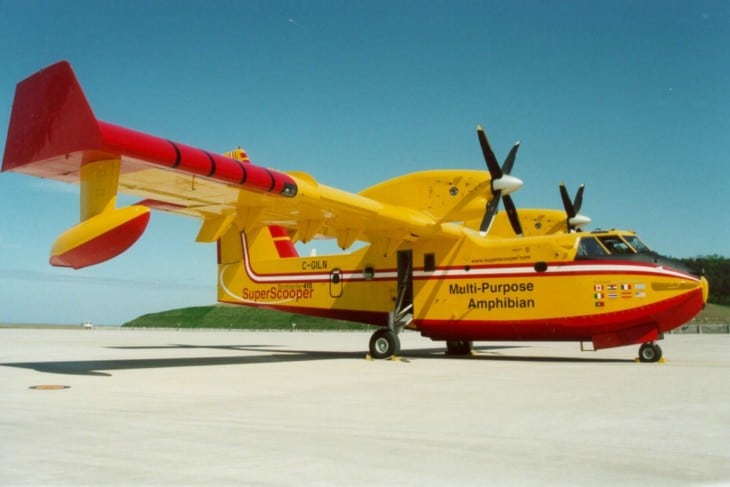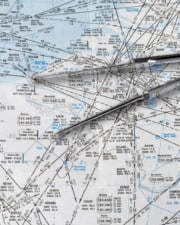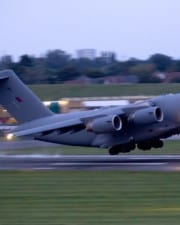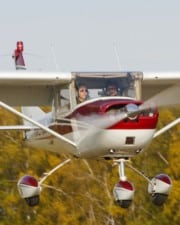Besides making airplanes look cool, designers also want to make them fly well. To do this, they work hard to make airplanes that are stable. Many little things keep an airplane pointed in the direction you want it to go, some of which you may have never thought about or noticed. Keel effect is one of the little things.
Table of Contents
Keel effect is a design feature of aircraft that gives it lateral stability. In other words, the keel effect of an aircraft’s shape will keep it from rolling. Keel effect helps keep the airplane flying straight ahead instead of entering a turn every time it hits a little turbulence.
What is Aircraft Stability?
The stability of a plane can be described as its tendency to remain flying straight and level. There are two types of stability — static and dynamic.
Static stability is an aircraft’s resistance to being disturbed from its flight path. Think of an airliner flying at altitude. If it has positive static stability, and it hits a bumpy patch of turbulence, the plane will not move very much. If it has negative static stability, the turbulence may make the plane turn, climb, or descend.
Dynamic stability is what happens to its flight path if it is disturbed. If our airliner hit a bump and began to climb, would it return to level flight on its own? If it did, it would have positive dynamic stability. If it continues to climb but at a steady rate, it would have neutral dynamic stability. If it continued to nose up and climb faster and faster until it stalled, it would have negative static stability.
You might think that aircraft designers would want their planes to be positively statically and positively dynamically stable all the time, right? But in fact, every plane has a mixture of different traits for different purposes.

The more stable a plane is, the harder it is for the pilot to maneuver it. Stability is linked to controllability. A very stable airplane requires a lot of work on the part of the pilot to climb, turn, or descend.
So, if designing an aerobatic stunt plane, positive stability may not be desirable. If designing a training airplane, some stability is good. If designing a large transport aircraft, even more stability may be desired.
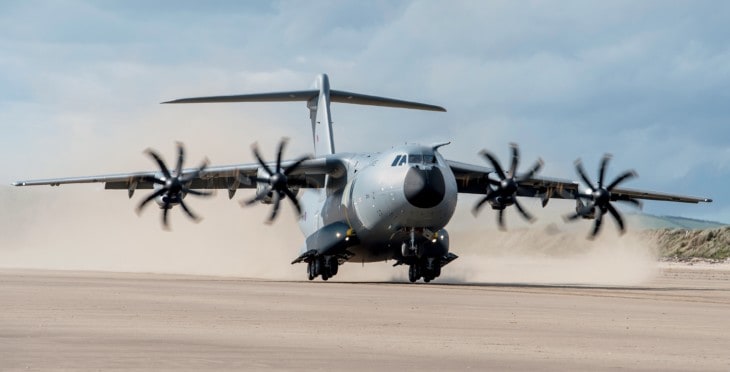
What is Lateral Stability?
An aircraft can be stable or unstable (or negatively stable, if you will) around each of its three axes of flight.
The three axes of flight are:
- Lateral, which runs from wing tip to wing tip
- Longitudinal, which runs from nose cone to tail cone
- Vertical, which runs up and down through the CG

The names of each type of stability refer not to the axis of movement, however. Instead, their names refer to the direction of movement they control.
- Longitudinal stability is about controlling the pitch of the plane—its nose up, nose down movement.
- Directional stability is about controlling the plane’s yaw—its nose-left, nose-right movement.
- Lateral stability is about controlling the roll of the plane—the tendency of the wings to dip one way or the other.
For each of these types of stability, aircraft designers employ features that can help increase stability. If a plane in testing demonstrates poor stability in one area, designers can add tweaks to the design to make it better.
Longitudinal stability is typically controlled by the aircraft’s weight and balance and horizontal stabilizer.
Directional stability is controlled by the fuselage and vertical stabilizer, both of which keep the plane pointed in the direction it’s traveling.
Lateral stability is a combination of design factors, including keel effect and dihedral.
What is Keel Effect in Aeronautics?
Keel effect is one of those design features that keeps an airplane stable. Keel effect is a type of lateral stability. An airplane with positive static stability thanks to a strong keel effect would be difficult to roll left and right.
The “keel” in keel effect is like the keel of a ship, which keeps the ship pointed the direction it’s trying to go.
How Does Keel Effect Work?
In airplanes, the fuselage acts as a keel. It keeps the plane pointed in the desired direction.
High wing airplanes have a greater keel effect than low wing planes do. If the plane is disturbed and one wing dips down, the fuselage acts as a pendulum. It basically pulls the plane back to level flight.

What Other Ways Can a Plane Have Lateral Stability?
Besides keel effect, three other features of aircraft design contribute to positive lateral stability. They are dihedral, sweepback, and weight distribution.
Dihedral
If you stand right in front of most planes, you will notice that their wings are not straight. They usually point up a bit, such that the wingtips are higher than the wing roots. The angle at which the wings meet the fuselage is called dihedral.

When a plane with dihedral is sideslipped and one wing drops, the lower wing gets a higher angle of attack. That leads to an increase in lift, which helps to roll the plane level flight again.
Sweepback
Sweepback is an aircraft design that features wings whose leading edges trail back as they get away from the plane. High-speed aircraft often have much more sweepback than low-speed ones do.

Does sweepback improve lateral stability? It does, but not nearly as much as dihedral does.
Like dihedral, when a plane with sweepback is disturbed and drops a wing into a roll, the low wing presents its leading edge more perpendicular to the airflow. That increases the lift produced, raising the wing and returning the plane to level flight again.
References ▾
Related Posts
